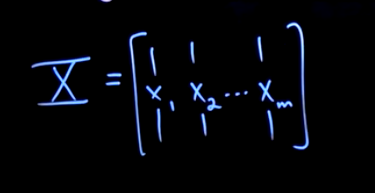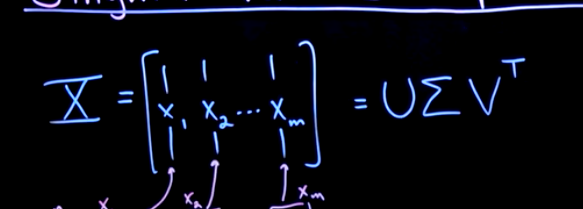Singular Value Decomposition Youtube Playlist
1. Singular Value Decomposition Overview
- Helps with data reduction, dimensionality reduction, and as a foundation and as a foundation of ML
- Most used general purpose tool in Linear Algebra for processing
- Think of it it as a data reduction tool
- SVD will help reduce this data into the key features for analyzing and describing this data
- One of the first steps in dimensionality reduction and ML techniques
- the SVD is a data driven generalization of the Fast Fourier Transform
- Think of them as tailored to the specific problem
- Lot of features in common with the FFT, but more specific to the data we have access to
- One thing you can do is use it to solve matrix equations for non-square A matrices
- This works well for linear regression models
- Can also use it as basis for PCA (principle component analysis)
- We will talk a lot about correlation
- It's used everywhere. FB, GOOGLE, Microsoft
- One of the most important things if you want to use Linear Algebra to make money
- Simple and interpretable Linear Algebra
2. Singular Value Decomposition: Mathematical Overview
video

Say you have a 1 megapixel image of someone's face. You could shape that into a single column, million pixel row column vector. This would be
The SVD will let us take the matrix

The

Since there are only
The columns of
Unitary means
This also holds for
Which means the first columns of
If some of the sigma values are very small we can essentially ignore them because they are ordered by importance
In talking about flows
In talking about faces, the first column of
Easy to compute in matlab and python
[USV] = svd(X);
They are guaranteed to exist and unique